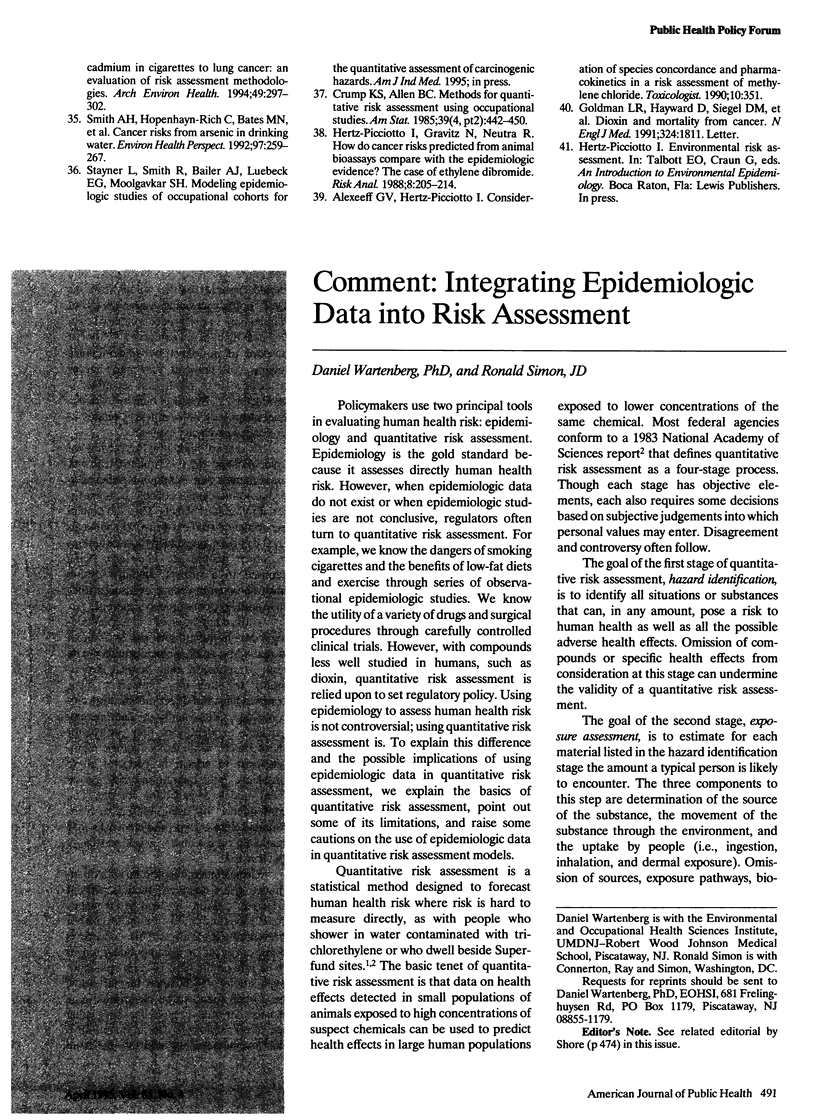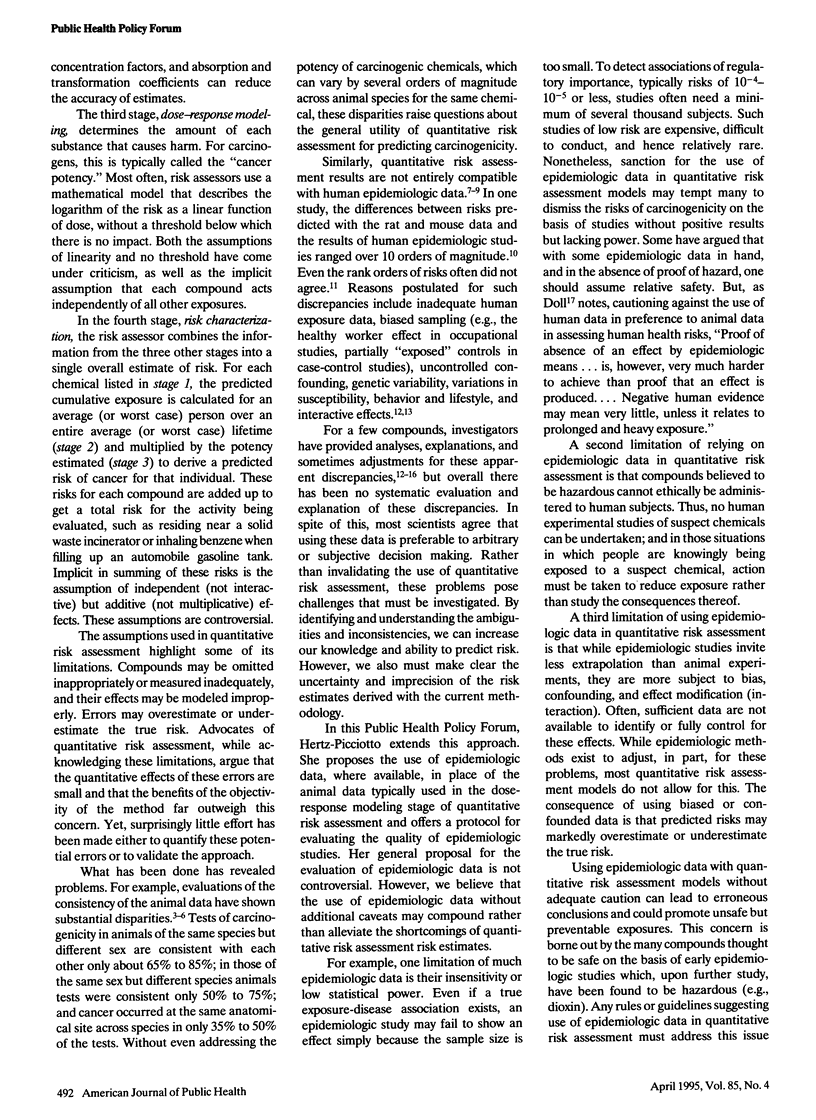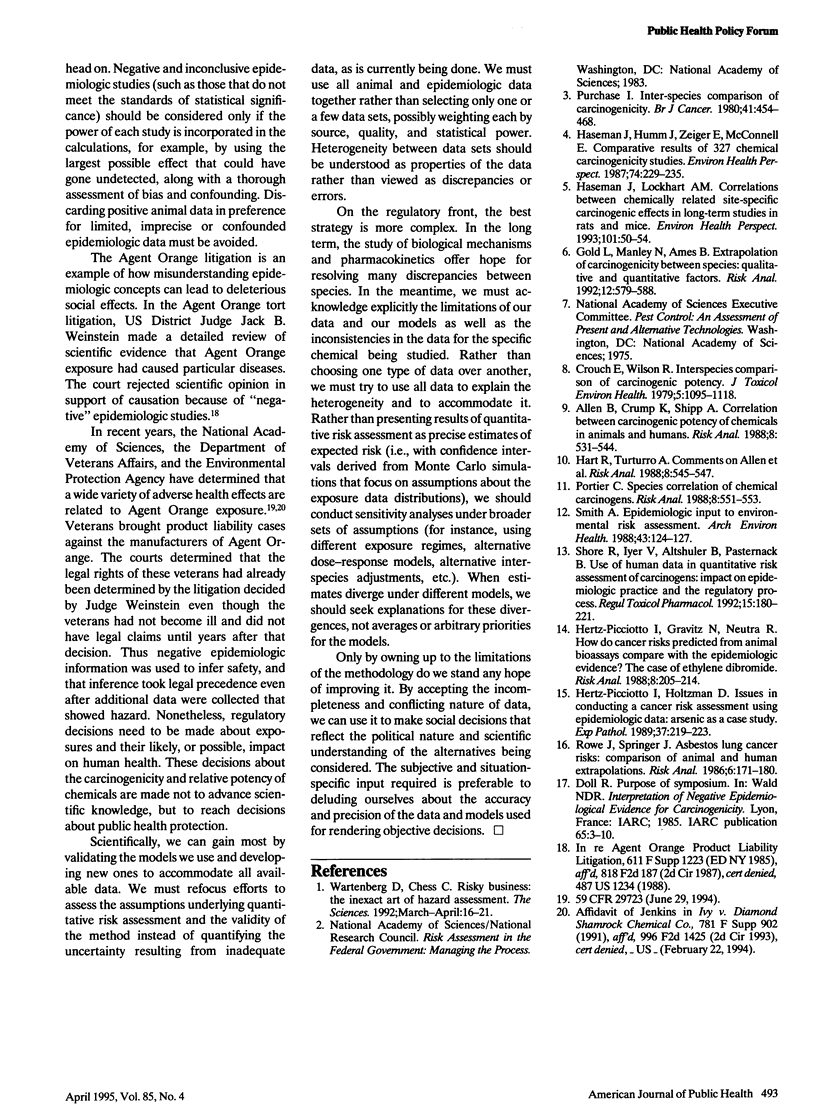Full text
PDF


Selected References
These references are in PubMed. This may not be the complete list of references from this article.
- Allen B. C., Crump K. S., Shipp A. M. Correlation between carcinogenic potency of chemicals in animals and humans. Risk Anal. 1988 Dec;8(4):531–544. doi: 10.1111/j.1539-6924.1988.tb01193.x. [DOI] [PubMed] [Google Scholar]
- Crouch E., Wilson R. Interspecies comparison of carcionogenic potency. J Toxicol Environ Health. 1979 Nov;5(6):1095–1118. doi: 10.1080/15287397909529817. [DOI] [PubMed] [Google Scholar]
- Doll R. Interpretation of negative epidemiological evidence for carcinogenicity. Proceedings of a symposium held in Oxford, 4-6 July 1983. Purpose of symposium. IARC Sci Publ. 1985;(65):3–10. [PubMed] [Google Scholar]
- Gold L. S., Manley N. B., Ames B. N. Extrapolation of carcinogenicity between species: qualitative and quantitative factors. Risk Anal. 1992 Dec;12(4):579–588. doi: 10.1111/j.1539-6924.1992.tb00714.x. [DOI] [PubMed] [Google Scholar]
- Hart R., Turturro A. Comments on Allen et al. Correlation between carcinogenic potency of chemicals in animals and humans. Risk Anal. 1988 Dec;8(4):545–547. doi: 10.1111/j.1539-6924.1988.tb01194.x. [DOI] [PubMed] [Google Scholar]
- Haseman J. K., Huff J. E., Zeiger E., McConnell E. E. Comparative results of 327 chemical carcinogenicity studies. Environ Health Perspect. 1987 Oct;74:229–235. doi: 10.1289/ehp.8774229. [DOI] [PMC free article] [PubMed] [Google Scholar]
- Haseman J. K., Lockhart A. M. Correlations between chemically related site-specific carcinogenic effects in long-term studies in rats and mice. Environ Health Perspect. 1993 Apr 22;101(1):50–54. doi: 10.1289/ehp.9310150. [DOI] [PMC free article] [PubMed] [Google Scholar]
- Hertz-Picciotto I., Gravitz N., Neutra R. How do cancer risks predicted from animal bioassays compare with the epidemiologic evidence? The case of ethylene dibromide. Risk Anal. 1988 Jun;8(2):205–214. doi: 10.1111/j.1539-6924.1988.tb01173.x. [DOI] [PubMed] [Google Scholar]
- Hertz-Picciotto I., Holtzman D. A. Issues in conducting a cancer risk assessment using epidemiologic data: arsenic as a case study. Exp Pathol. 1989;37(1-4):219–223. doi: 10.1016/s0232-1513(89)80052-0. [DOI] [PubMed] [Google Scholar]
- Portier C. J. Species correlation of chemical carcinogens. Risk Anal. 1988 Dec;8(4):551–553. doi: 10.1111/j.1539-6924.1988.tb01196.x. [DOI] [PubMed] [Google Scholar]
- Purchase I. F. Inter-species comparisons of carcinogenicity. Br J Cancer. 1980 Mar;41(3):454–468. doi: 10.1038/bjc.1980.70. [DOI] [PMC free article] [PubMed] [Google Scholar]
- Rowe J. N., Springer J. A. Asbestos lung cancer risks: comparison of animal and human extrapolations. Risk Anal. 1986 Jun;6(2):171–180. doi: 10.1111/j.1539-6924.1986.tb00205.x. [DOI] [PubMed] [Google Scholar]
- Shore R. E., Iyer V., Altshuler B., Pasternack B. S. Use of human data in quantitative risk assessment of carcinogens: impact on epidemiologic practice and the regulatory process. Regul Toxicol Pharmacol. 1992 Apr;15(2 Pt 1):180–221. doi: 10.1016/0273-2300(92)90049-f. [DOI] [PubMed] [Google Scholar]
- Smith A. H. Epidemiologic input to environmental risk assessment. Arch Environ Health. 1988 Mar-Apr;43(2):124–129. doi: 10.1080/00039896.1988.9935838. [DOI] [PubMed] [Google Scholar]


